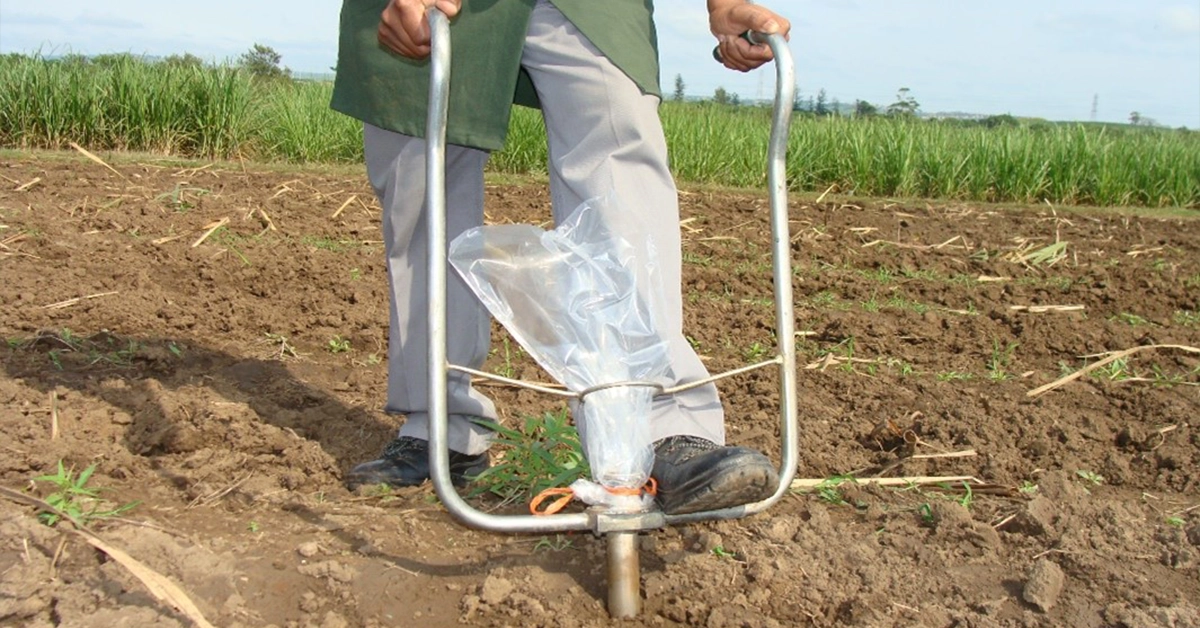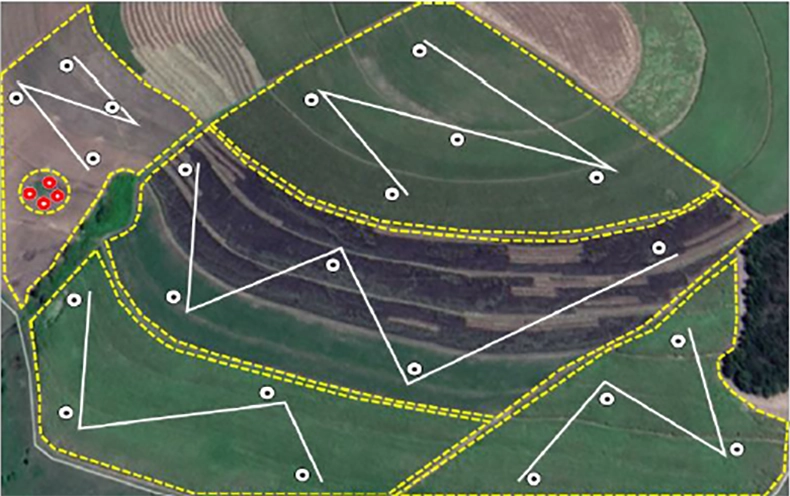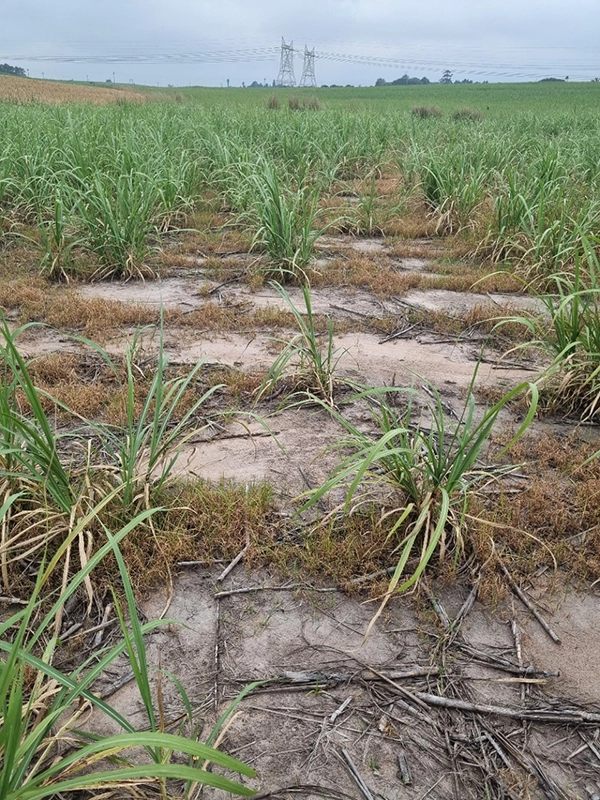Topsoil Sampling
Topsoil samples should ideally be taken every year or two to assess soil fertility and nutrient levels. Samples should be collected to a depth of 20 cm. The best method for collection is to take 20-30 subsamples from various points within a field using a grid or zigzag pattern. These subsamples should be thoroughly mixed together before being placed in a sample box.
To ensure accuracy, avoid sampling within 5-10 meters of the field edge, as these areas may not be representative of the entire field. Beater augers are excellent tools for topsoil sampling and can be purchased from FAS at SASRI. While samples can be collected at any time of the year, access is usually easiest after harvest.
Zig zag patterns showing how to collect topsoil fertility samples (white lines). White dots indicate possible sampling locations for subsoils. The red dot shows an area that needs a separate sample to identify cause for differences to rest of field. In tilled or broadcast fertiliser fields, the pattern can be randomly applied.
Subsoil Sampling in Dryland Areas
Subsoil sampling in dryland areas should be conducted before replanting or when subsoil acidity is suspected. Samples should be taken at depths of 20-40 cm and 40-60 cm, with an optional depth of 60-80 cm if further analysis is needed. Collecting 3-4 subsamples within a field, either by digging pits or using a depth auger, provides a more accurate representation of soil conditions. Since subsoil is less variable than topsoil, fewer samples are required.
Each depth should be submitted as a separate sample. For example, four 20-40 cm depths should be combined into one “20-40 cm” box, and four 40-60 cm depths should be placed in a “40-60 cm” box. Depth augers for subsoil sampling are also available for purchase from FAS at SASRI.
Subsoil Sampling in Irrigated Areas
For irrigated areas, subsoil sampling should be done before replanting or when soil sodicity or salinity is suspected. These conditions can often be identified by poor crop growth, poor drainage, or soil structure collapse. Sampling should be carried out at depths of 0-30 cm, 30-60 cm, and 60-90 cm.
Similar to dryland sampling, 3-4 subsamples should be collected per field using a depth auger or by digging pits, focusing particularly on patches with poor growth. Each depth should be submitted separately, with samples from 0-30 cm, 30-60 cm, and 60-90 cm placed into their respective sample boxes. If salinity or sodicity is a concern, using a ‘Salinity/Sodicity’ soil submission form ensures proper analysis. Additionally, submitting an irrigation water sample to FAS for testing can help determine whether irrigation practices are contributing to soil issues.
Following these best practices ensures accurate soil assessment and optimal crop management. For more information, please contact your local Extension Specialist for advice, or refer to SASRI Information Sheet 7.16 Soil Sampling Procedures.




